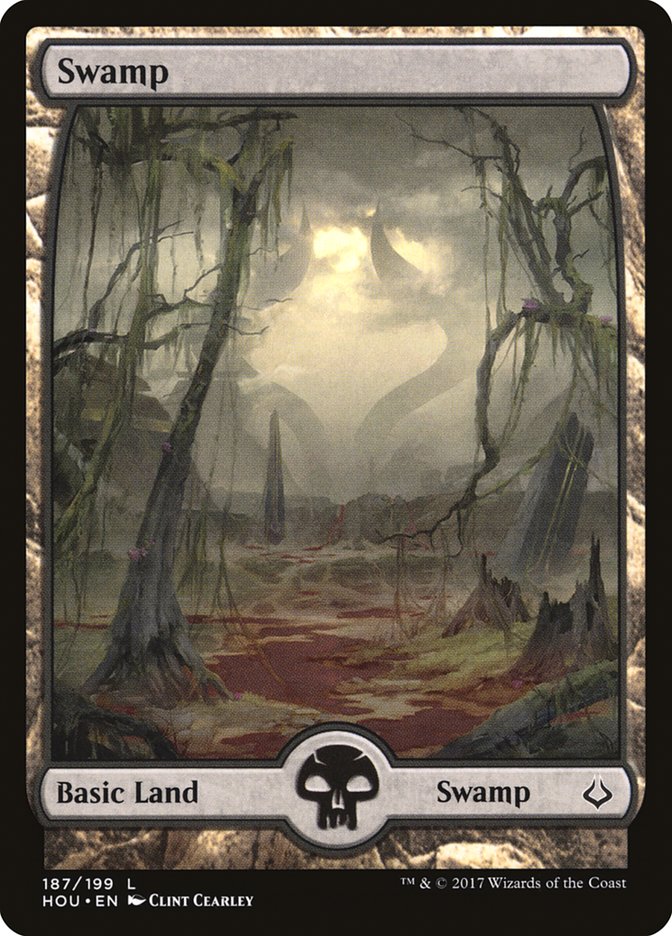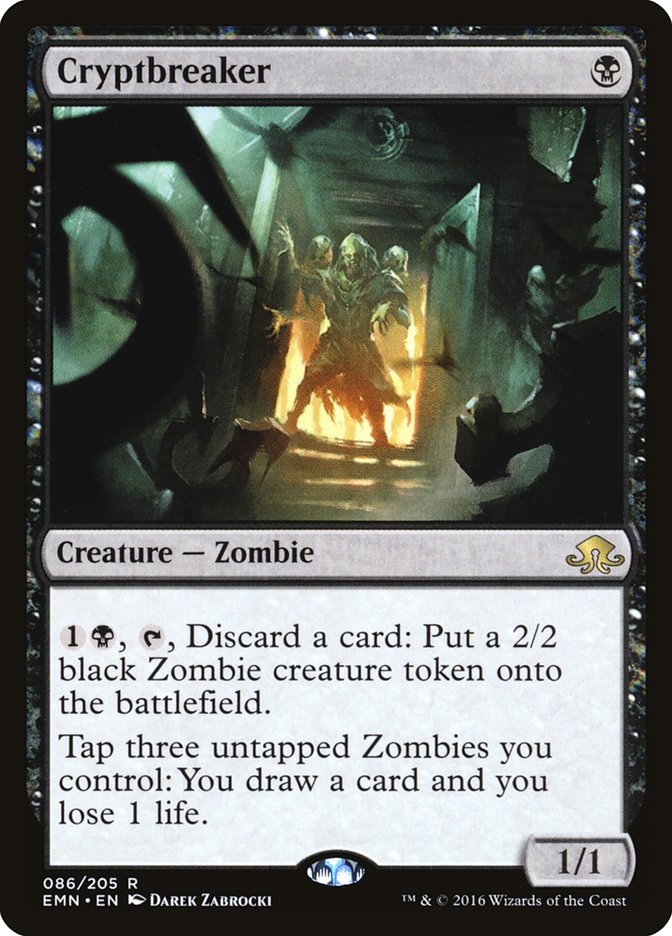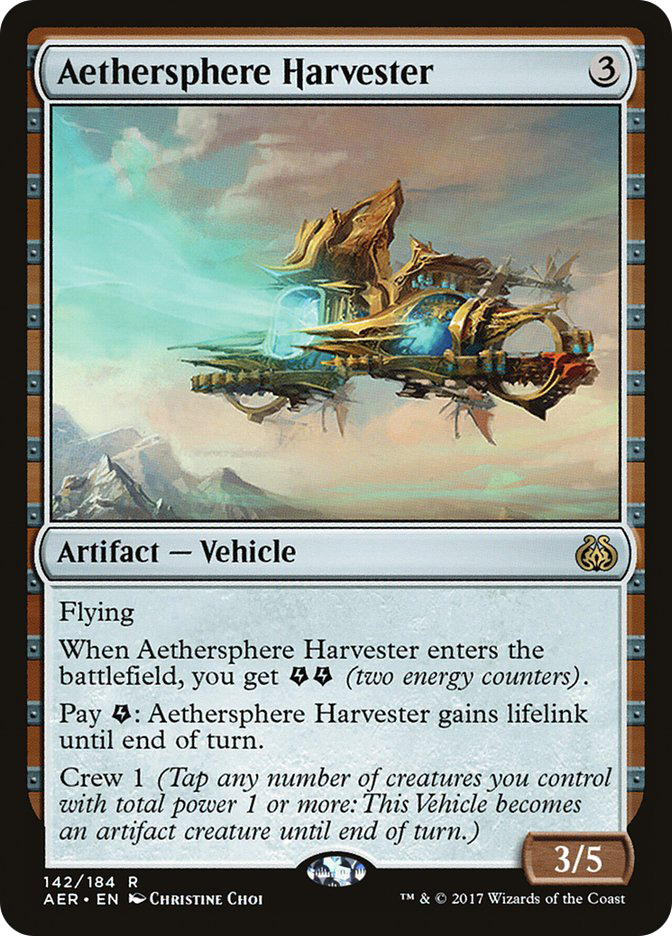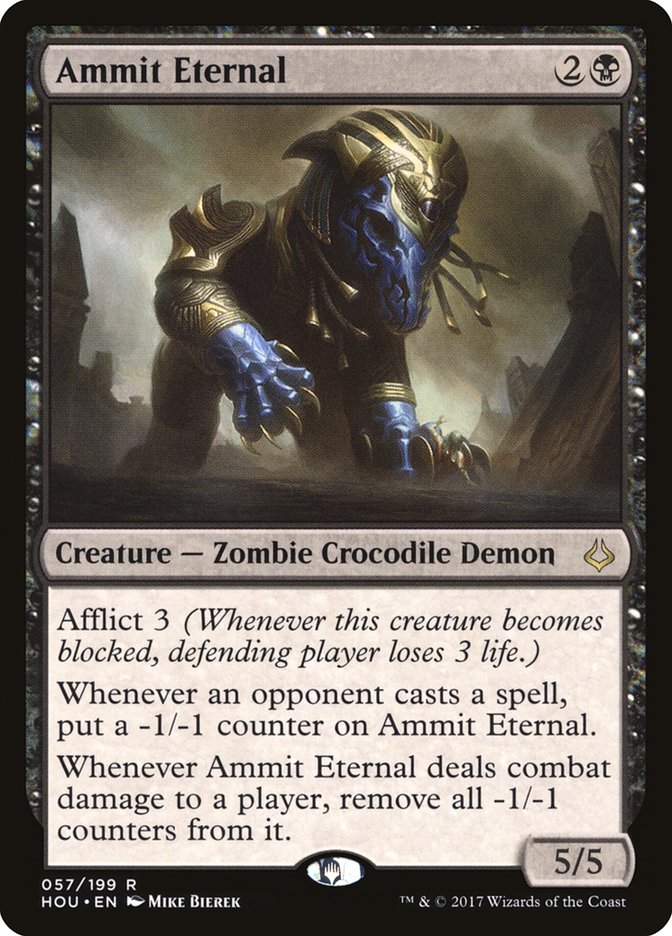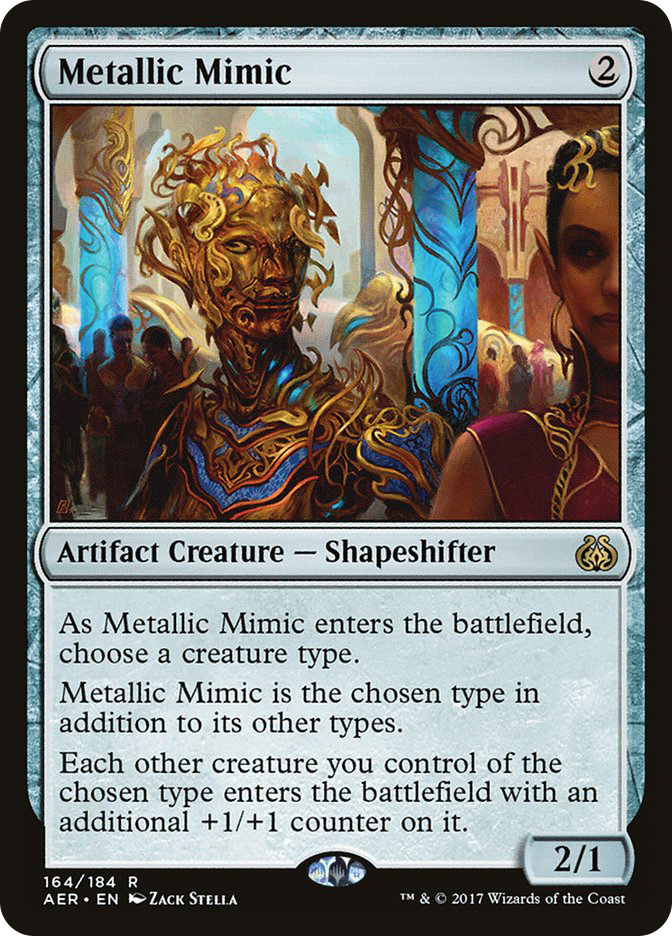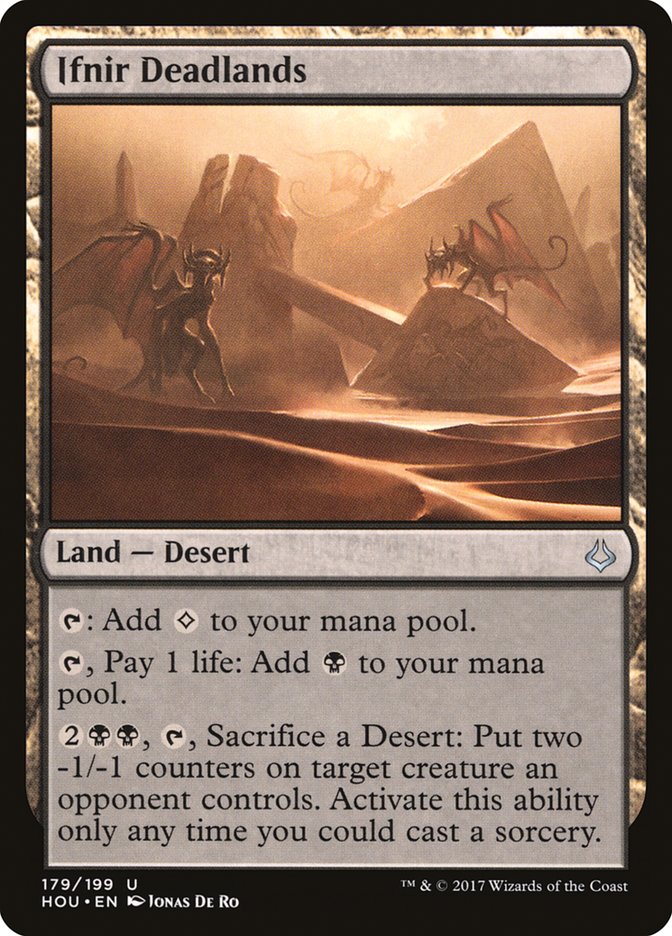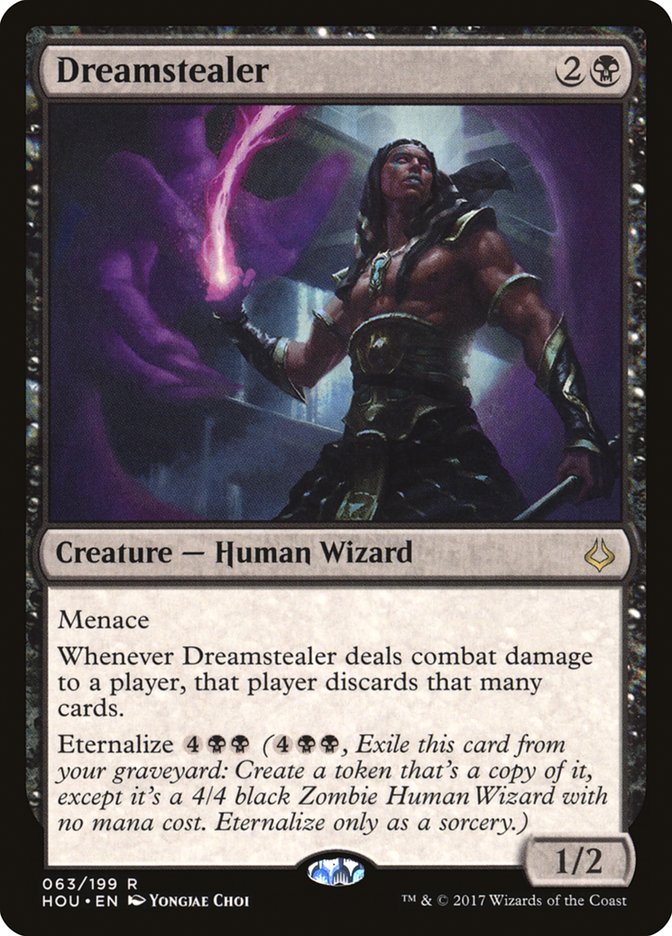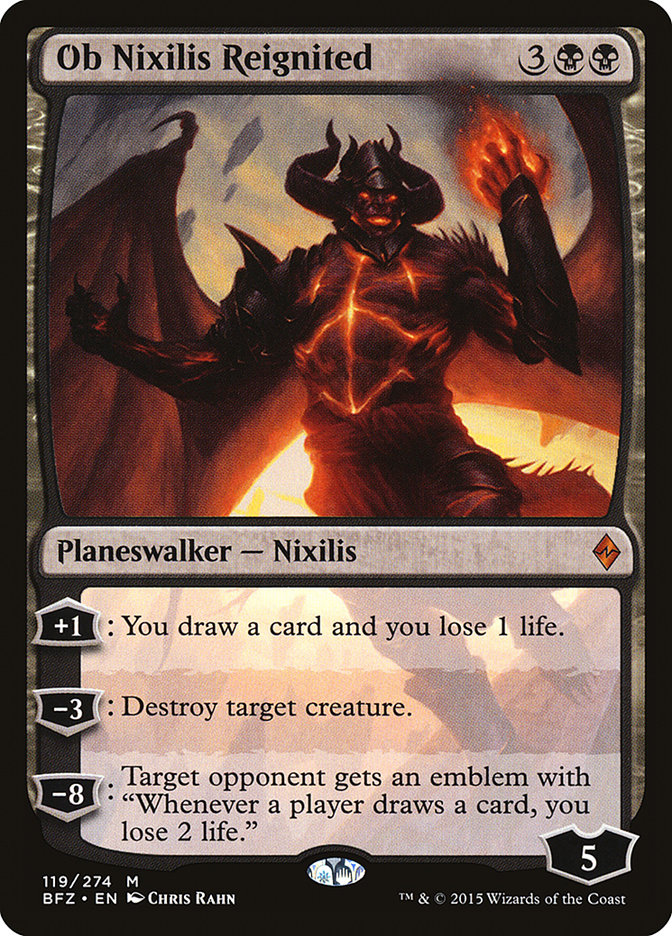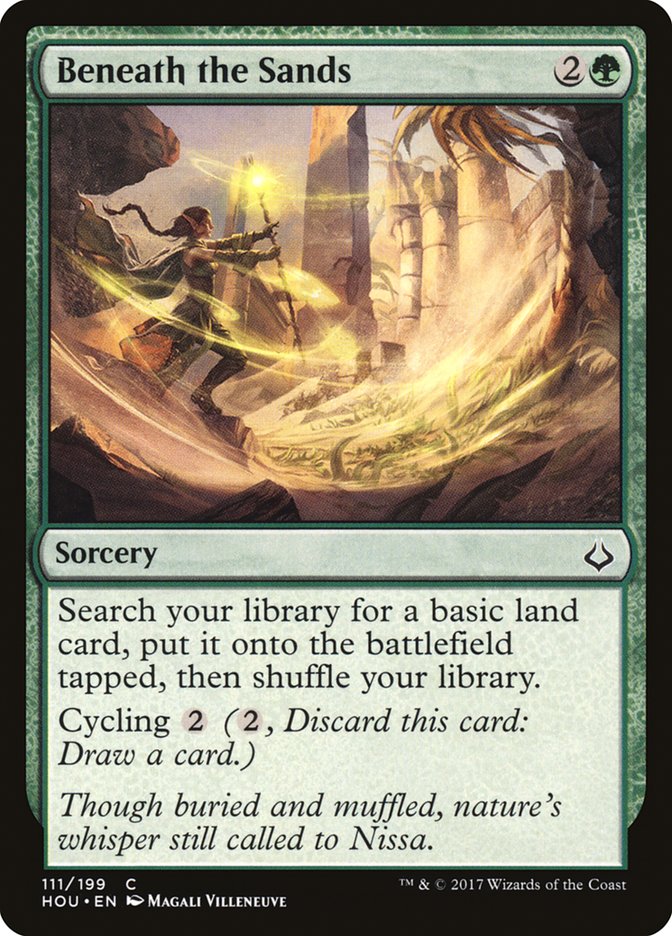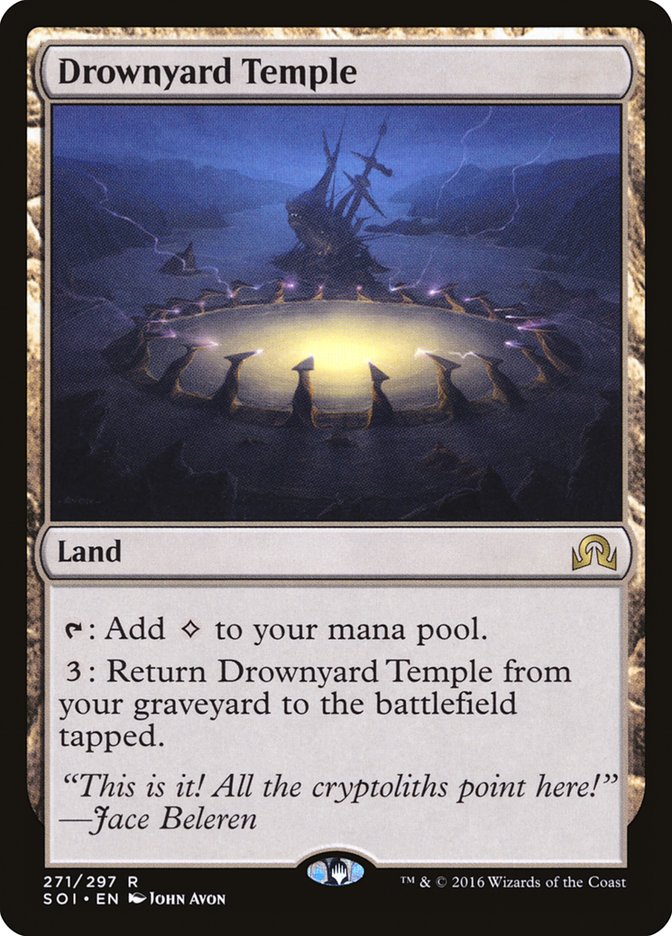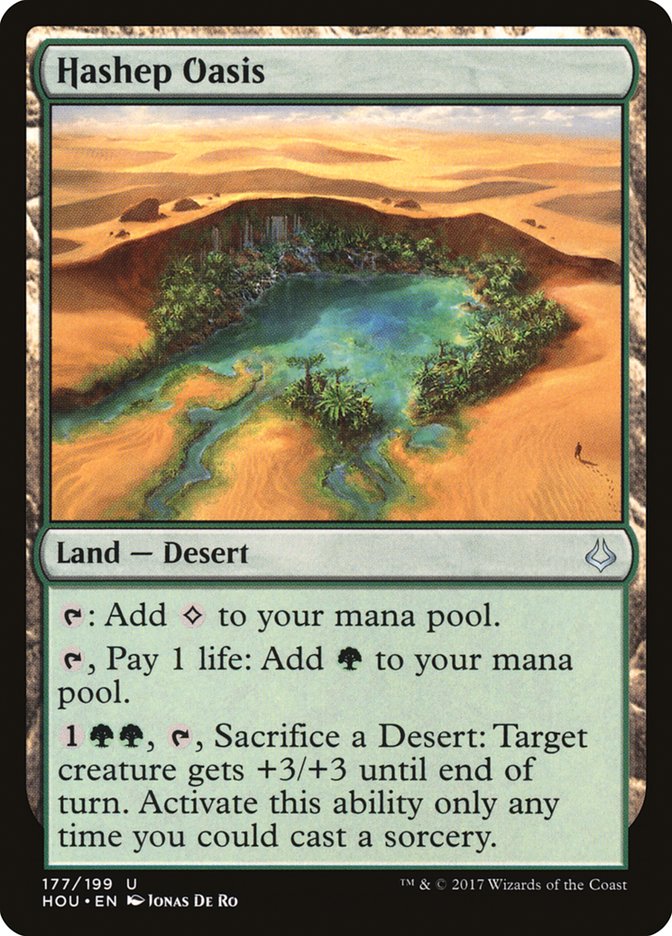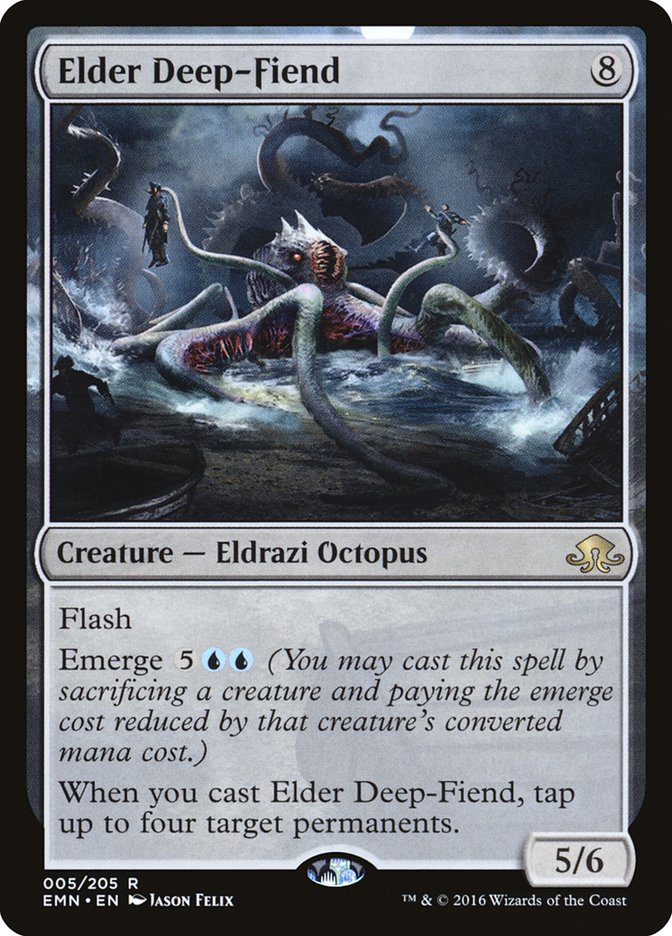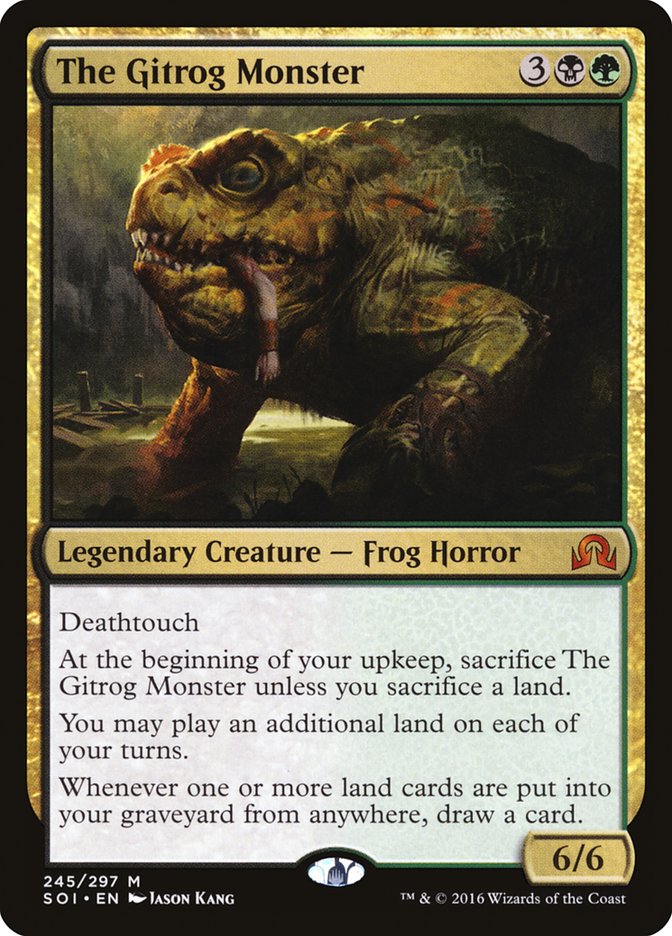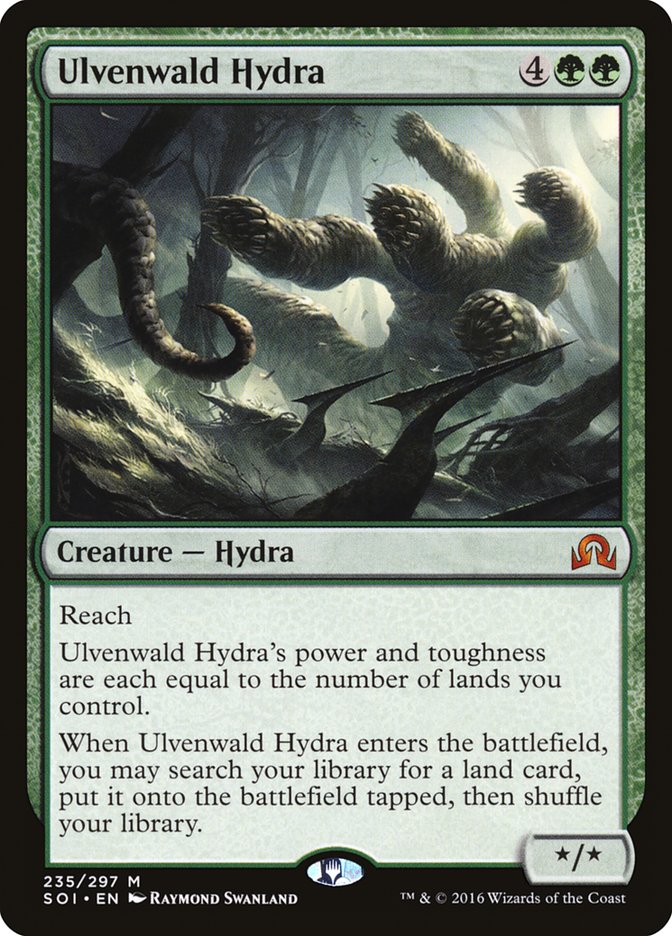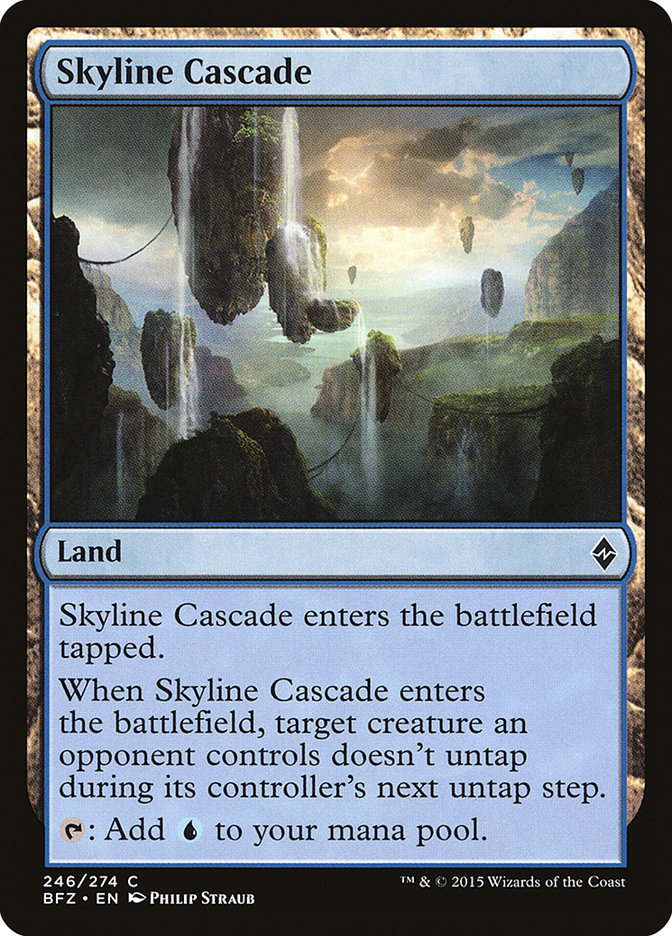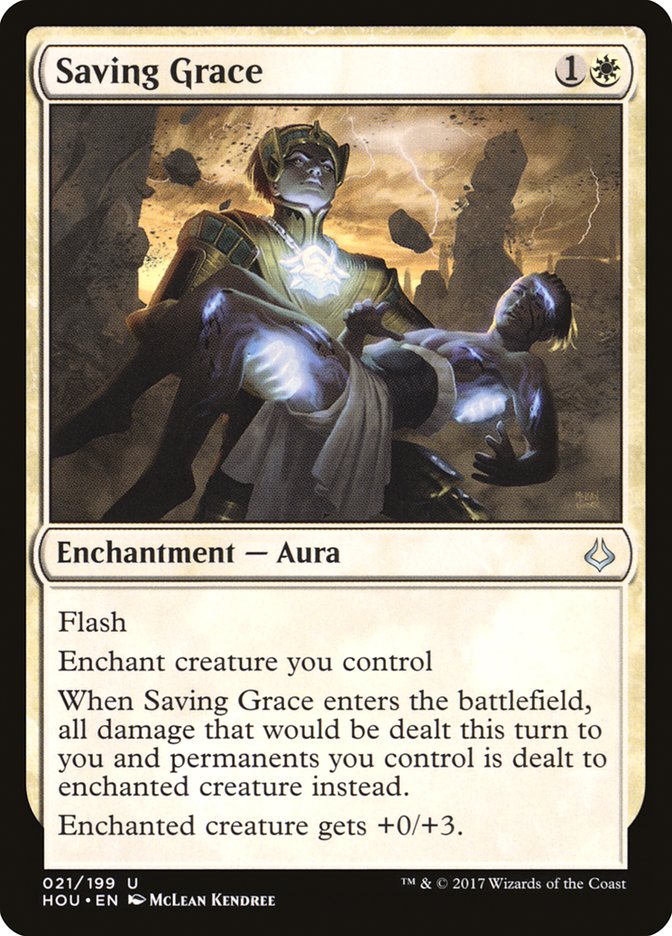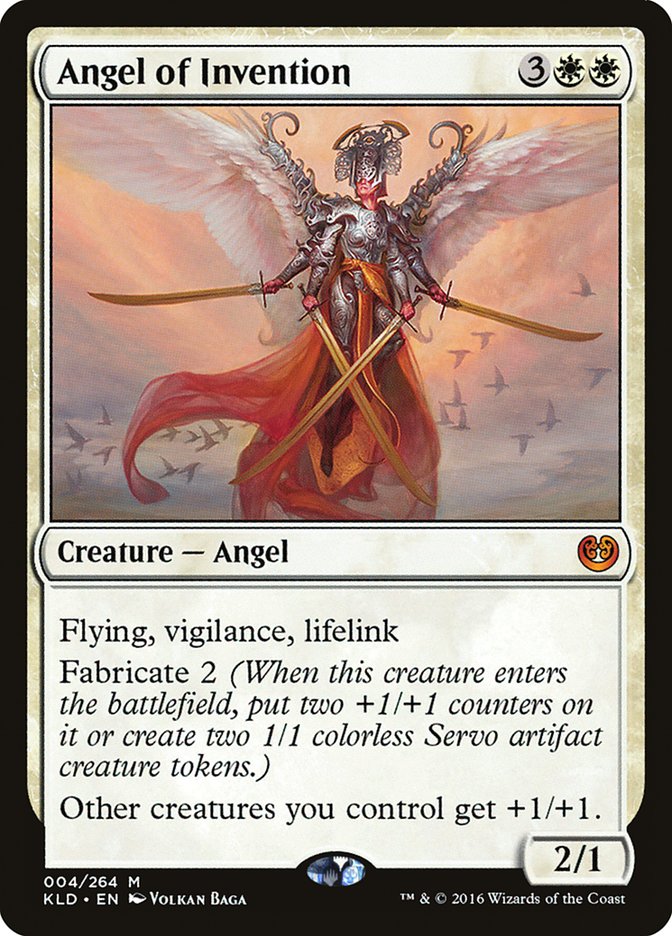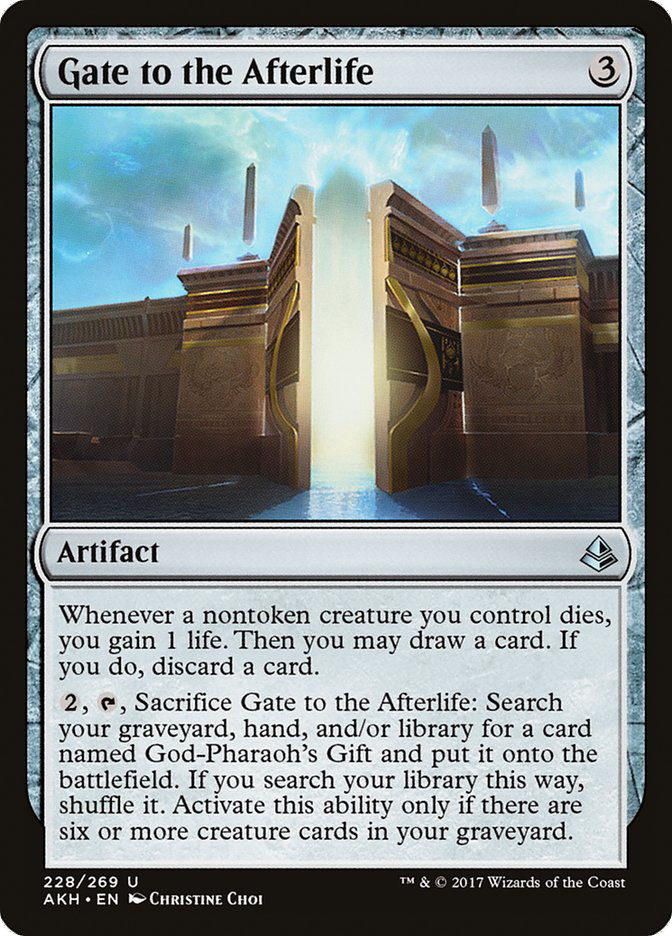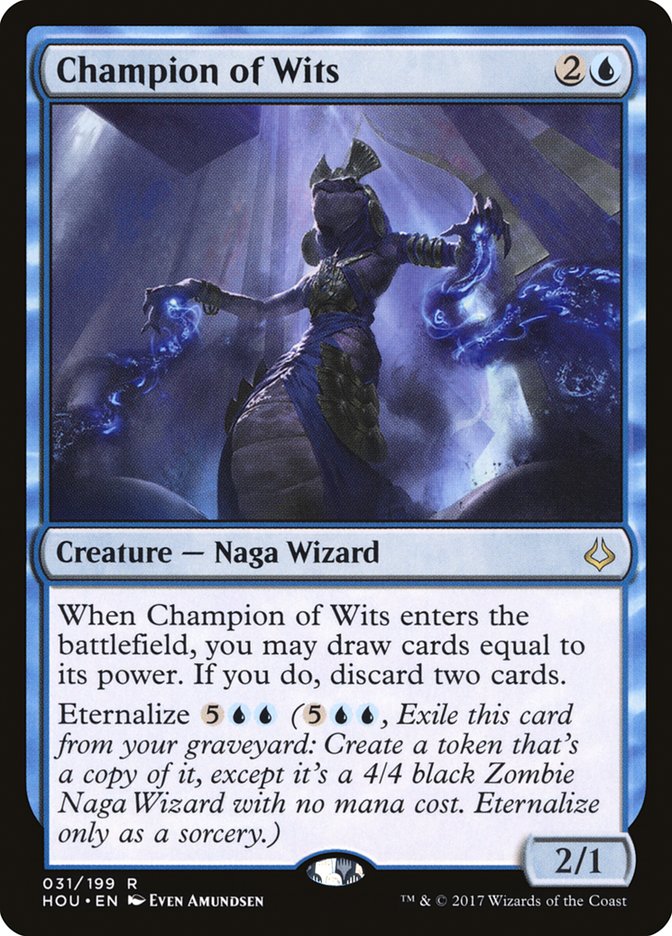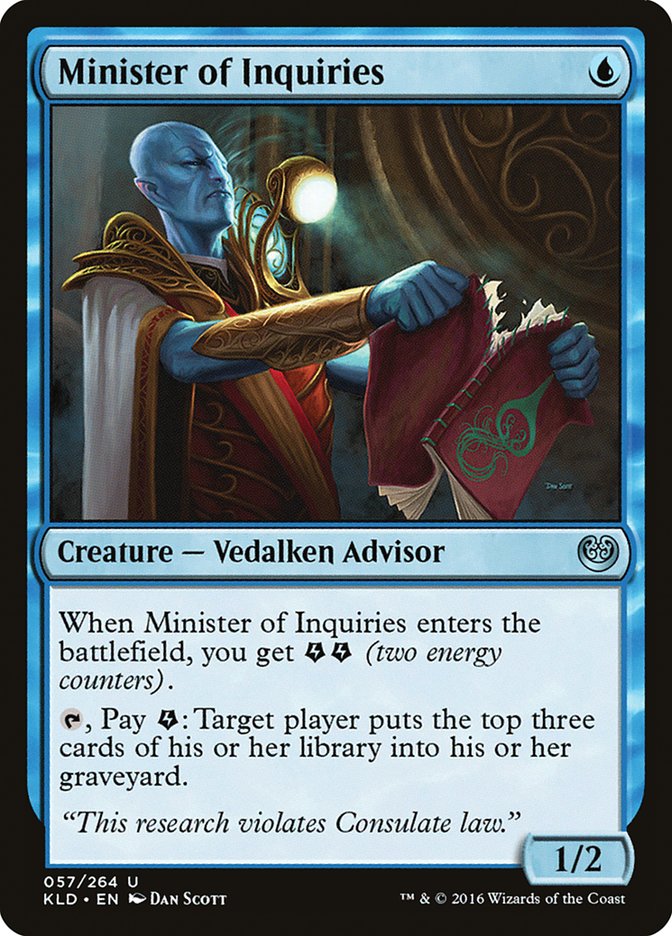When testing for a big event like Pro Tour Hour of Devastation, my process typically goes like this:
1. Brew decks with the new set.
2. Leading up to the first week of tournaments, hammer out the finer details of the front-runners.
3. Once some results are in, start brewing again.
4. Pick a deck, tune it, and register it.
We are officially in Phase 3, and Phase 3 is my favorite.
There is a significant amount of information out there to give you a glimpse into what the metagame will look like. That includes the new brews that may have come out of the new set. Hour of Devastation was light in build-arounds, but it was heavy in things that impacted Standard.
With ten viable decks, things have gotten interesting. Can you brew something that beats ten decks simultaneously? I mean, I’m gonna try.
Let’s start with 22 nineteen basics.
Creatures (21)
- 2 Kalitas, Traitor of Ghet
- 4 Scrapheap Scrounger
- 4 Glint-Sleeve Siphoner
- 4 Dread Wanderer
- 3 Dreamstealer
- 4 Ammit Eternal
Planeswalkers (2)
Lands (25)
Spells (12)

Is “Protect the Queen” a viable strategy?
Not only does this deck feature a pile of must-kill threats, it also has some early threats that are difficult to kill. I’ve yet to figure out if that’s synergy or not. On one hand, it allows you to stand up to opponents who may try to overload you with removal. On the other hand, it means they probably won’t use their early removal on that something that will simply come back, so they end up having more removal when you cast your Kalitas or other big threat you’ve been waiting to deploy.
I strongly considered having Cryptbreaker in the deck as well, and after playing some, it probably should be in there. Having Cryptbreaker as another must-kill threat might be better than returning Dread Wanderers in the late-game anyway.
This list is an attempt to better fight the bad matchups for Mono-Black Zombies, like G/R Ramp and U/R Control. It also includes some cards like Skysovereign, Consul Flagship and Aethersphere Harvester to fight midrange battles and gain life against aggressive decks.
Aethersphere Harvester is one of the single best cards against all forms of Mono-Red Aggro, even the bigger ones. Kalitas, Traitor of Ghet used to be, but all that seems to happen these days is it gets gunned down by Chandra, Torch of Defiance or Glorybringer. By maxing out on Fatal Push, this deck is able to keep its life total high heading into the mid-game, which gives your powerful threats more time to come online. If you connect with a lifelinker against Mono-Red, the game is probably over.
I was inspired to use Glint-Sleeve Siphoner in my midrange black deck because of Nathan Steuer’s Magic Online PTQ Top 8 deck. Aethersphere Harvester was likely going to be in the deck already, so adding some Aether Hubs and Siphoners meant that I’d likely get several uses out of them if they were to somehow remain alive.
Ammit Eternal is legitimately good. I’ve seen it perform well in Mardu Vehicles already, but I wouldn’t necessarily recommend it for Mono-Black Zombies. The same can basically be said for Dreamstealer. Zombies is about going wide and pumping its creatures. Ammit Eternal is a Zombie, but that doesn’t necessarily mean it’s contributing to your gameplan. It’s like putting Tarmogoyf in a Modern Elves deck. Sure, it could do some good work for you, but most of the time it’s not going to help you win and could even be detrimental to your success.
Overall, this is kind of what I want my Zombies deck to look like post-sideboard against a lot of decks. This deck, while fine, should serve as a cautionary response to the question of, “You sideboard in Card X a lot, so why not just play it maindeck?”
While not explicitly a brew, if I were playing Zombies, I’d be playing this:
Creatures (22)
- 2 Kalitas, Traitor of Ghet
- 4 Relentless Dead
- 4 Diregraf Colossus
- 4 Cryptbreaker
- 4 Lord of the Accursed
- 4 Dread Wanderer
Lands (24)
Spells (14)

Not much has changed except for the addition of Ifnir Deadlands into the maindeck and the removal of Metallic Mimic. Our sideboard is much different, but when the format is shifting, you have to also, so that shouldn’t be a surprise.
It’s not that there’s something inherently wrong with Metallic Mimic. In fact, I remember many times where Metallic Mimic filled my curve and/or the extra +1/+1 counters made my creatures outsize theirs. Still, Standard got faster and Zombies was never a deck that racing other decks. It was always about slowing them down and building a bigger battlefield than your opponent. These days, an extra removal spell in the maindeck is a welcome sight in most matchups.
An extra removal spell leads to games slowing down just a touch, which then opens the door for you to cast bigger, more impactful cards. Also, if the games go on a bit longer, you’re going to want to topdecking powerful cards, not Metallic Mimics.
Ifnir Deadlands is excellent. It should be noted that it outright kills a Winding Constrictor. While not as punishing as Westvale Abbey (because you can still cast your cards), drawing multiple Ifnir Deadlands instead of Swamps can certainly be a downside.
Dreamstealer, as I mentioned above, is a solid role-player. It pressures ramp and control decks while being difficult to fully contain. It’s yet another reason why I wouldn’t mind an additional land. It would be a tad more efficient if there was a discard spell to pre-empt it, but I wanted my slots for other cards.
Ob Nixilis Reignited is excellent against Hour of Devastation. Aethersphere Harvester helps against Mono-Red and aggressive Mardu decks. Never//Return helps you keep planeswalkers in check, like those out of Mardu Vehicles or Four-Color Control.
The only thing I don’t like about the list is that I want a 25th land with the fourth Liliana’s Mastery and Kalitas, Traitor of Ghet. Ifnir Deadlands should alleviate flooding issues also. Liliana’s Mastery is an “easy” shave, but with more sweepers in the format, I want access to the quick reload. Also, if I cut a five-drop, I’m less excited about adding a land. It might be right to only play a miser’s Kalitas, but it’s another card that plays well with the additional removal.
Shrug.
Creatures (13)
- 1 Ulamog, the Ceaseless Hunger
- 1 World Breaker
- 2 Tireless Tracker
- 3 Elder Deep-Fiend
- 1 Ishkanah, Grafwidow
- 1 Ramunap Excavator
- 4 Champion of Wits
Lands (24)
Spells (23)

This deck is effectively a Temur Emerge deck, except that it has the top-end of G/R Ramp. From playing Temur Emerge, I knew I either wanted a more aggressive base (like with Grim Flayer and/or Prized Amalgam) to take advantage of the tempo gained from Elder Deep-Fiend or a way to go over the top of other people in the late-game once they had dealt with my early tempo advantage.
In order for G/R Ramp to be successful, I truly believe it needs better ways to filter through its draws. I’ve seen some lists with Tormenting Voice (to discard Kozilek’s Return or Drownyard Temple) and Vessel of Nascency, and those looked promising. However, Champion of Wits does a much better job of that aside from asking you to add an additional color. Having access to Champion of Wits also means your mid-game is going to be excellent.
Beneath the Sands is a trap. Three mana is asking too much, even if you can cycle it when you don’t need the Rampant Growth effect. Using Drownyard Temple to ramp is much more effective because you get to do it at instant speed, it can’t get Censored or Spell Quellered, and it doesn’t even cost you a card if you’re doing it right.
Instead of using inefficient ways to accelerate your mana, you should be trying to slow the game down instead. This deck might be breaking that rule to some degree, as it’s hyper-focused on neither ramping nor slowing the game down, but it’s also not trying to get to ten mana as quickly as possible. It’s completely fine with taking a break on turn 6 to eternalize Champion of Wits.
Hashep Oasis is nice with Elder Deep-Fiend. The emerge monster is asking you to close the game quickly, and Hashep Oasis helps provide that. Unfortunately, Ipnu Rivulet isn’t providing much. If you needed a last-ditch effort to provide delirium, dig for Champion of Wits, or provide delirium for Traverse the Ulvenwald, it’s there. Sadly, it’s mostly used to mill your opponent to see more cards before you concede.
The Gitrog Monster plays well with Ramunap Excavator, which was fun but didn’t ultimately contribute to me winning any games. Sanctum of Ugin alongside Ramunap Excavator is super-fun, though, and actually contributes to winning games you couldn’t otherwise win.
Aetherworks Marvel decks used Ulvenwald Hydra to hard-cast Ulamog, the Ceaseless Hunger in the face of hate last season, but couldn’t we already be using that as our Plan A? That’s effectively what Hour of Promise does, but is there a world where we want more Hour of Promises? Maybe we want an Hour of Promise effect that’s tutorable with Traverse the Ulvenwald?
I think an Ulvenwald Hydra build exists, but it’s not in the same space as Temur Ramp. Drownyard Temple ends up eating your land slots that could be devoted to colorless lands, and Ulvenwald Hydra into Shrine of the Forsaken Gods only ramps to Ulamog on curve if you already have another Shrine of the Forsaken Gods.
One card I think could be good in a slightly different metagame is Skyline Cascade. With Hour of Promise and Ulvenwald Hydra searching up any land, we have the ability to think outside the box. One of the biggest downsides to Hour of Promise is that it takes a turn to cast. Thankfully, it can give you some Zombies to block, but what if your opponent is hitting you with a Glorybringer? Skyline Cascade to the rescue!
Creatures (27)
- 4 Bygone Bishop
- 4 Thraben Inspector
- 3 Hanweir Militia Captain
- 2 Thalia, Heretic Cathar
- 4 Selfless Spirit
- 4 Angel of Invention
- 2 Fairgrounds Warden
- 4 Glory-Bound Initiate
Lands (25)
Spells (8)

There’s nothing too crazy here. It’s basically what happens when you decide you don’t want to maindeck Dusk // Dawn anymore. It may or may not be correct to do that, but it does open up some doors in deckbuilding.
If one of the main creature decks you’re facing is Mono-Red Aggro, you want fewer Dusk // Dawns and more three-power creatures, namely Glory-Bound Initiate. That matchup is rough in Game 1 and doesn’t get much better post-sideboard unless you have significant help. Glory-Bound Initiate doesn’t suddenly swing the matchup in Game 1, but it does provide you with a must-kill threat, which is at least a step in the right direction.
Figuring out a plan for them post-sideboard is difficult because the configurations vary wildly. Saving Grace might not be the best solution, but neither is Sunscourge Champion or Blessed Alliance.
I will note that the versions with Angel of Invention are much, much worse against control decks. Cloudblazer was a huge threat there, while Angel of Invention will usually be played on a dry battlefield and be dealt with easily. It does demand an answer, but I’d rather be Cloudblazing.
Gideon, Ally of Zendikar is a necessary sideboard card against control decks, especially if you don’t have the capability of playing a longer game with more card drawing. The best you can do is stick it post-Hour of Devastation, protect it from Torrential Gearhulk, and hope it’s good enough.
I wouldn’t recommend this build in the current metagame, but it does hammer the decks whose entire gameplan is generating the bigger battlefield presence, as it’s a fight Mono-White Monument will likely win.
There have been a few of these decks popping up, but it’s unclear how good they actually are. The lack of data means that people will likely have to figure it out on their own.
Some have a pile of cycling creatures, some have Ever After, and some have Marionette Master for a combo-like finish, but they all have a ton of sweetness.
Creatures (26)
- 4 Thraben Inspector
- 4 Wharf Infiltrator
- 4 Mausoleum Wanderer
- 2 Cataclysmic Gearhulk
- 4 Angel of Invention
- 4 Minister of Inquiries
- 4 Champion of Wits
Lands (23)
Spells (11)

Refurbish is genius. Not only can you Refurbish God-Pharaoh’s Gift, but you also get Gate to the Afterlife or Cataclysmic Gearhulk to contain wide battlefields.
Champion of Wits makes it all possible, but Minister of Inquiries and even Wharf Infiltrator do some work. The question of what to actually bring back with God-Pharaoh’s Gift is an interesting one, but I think this list solves it (or at least comes close).
You’re going to need something to deal with what they’ve been doing or at least catch you back up, so there’s Cataclysmic Gearhulk and Angel of Invention for that. To keep your own battlefield position stable, Mausoleum Wanderer is there to help.
Overall, it’s just a well-crafted deck. If you want to learn more, you could check out Zac Elsik’s stream.
Before too long it will be time to put away my brewing cap, and instead of scribbling nonsense decklists in my notebook, I’ll be writing down rough sideboarding plans. At the end of the day, the tightening and tuning process is more rewarding, but I can’t help be a little sad that the real fun is about to end.


